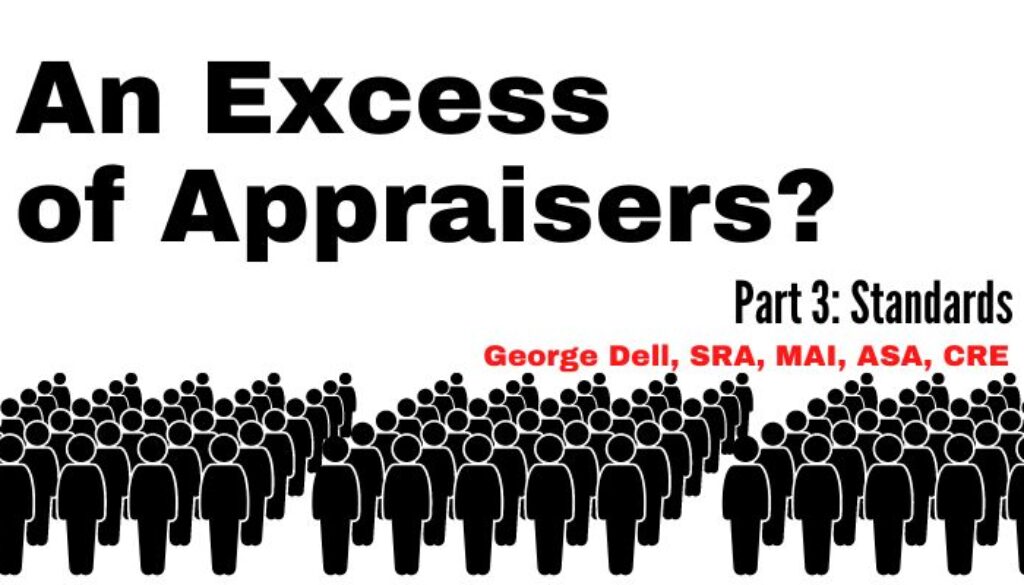How do Standards effect the excess of appraisers?
The excess of appraisers is cyclical. It persists by the five forces of friction: practices, standards education, regulation, and client expectation. In this blog issue, we consider the second friction (appraisal standards). Together and separately these prevent improvements in valuation, including additional services of risk measurement, forecasting, and real-time revaluation.
Each of these five forces serve to perpetuate, or even exaggerate the cyclical nature of the need for valuation skills and judgment. USPAP in itself is relatively stable, with no real change in the past 20 years to reflect changed technologies in data and analytics. It continues the emphasis on appraiser credibility, defined as “worthy of belief.”
USPAP says little about actual process. However, it does reiterate the accepted “three approaches to value.” These vintage approaches adapt well to areas of sparse, difficult-to-gather data. But are not adapted to areas where complete, electronic data is instantly available.
So how do stable standards help exaggerate cyclicality? excess
- Standards require a definition of value. In the U.S., this is described in USPAP (Uniform Standards of Professional Appraisal Practice). The dominant definition as promulgated, enforces ‘most probable price.’ This value definition responds to the psychology of public beliefs, with its exuberance, or despair, depending on where we are in the 10-15 year realty cycle. In this definition, value equals price.
- USPAP requires a personal ‘opinion’ of value (or other conclusions), rather than a predictive result. Recall that “predictive models are predominant“ in valuation settings. (And the “valuation process” is itself a model.) By this rule, opinion matches public beliefs.
- The required certification is wholly personal, not analytical in nature. It states: “the reported analyses, opinions, and conclusions … are my personal, impartial, and unbiased analyses, opinion, and conclusions.”
- The required “market area” as a data selection criterion exaggerates the swing of price levels in neighborhoods and market areas. High priced properties usually tend to be ‘stickier’ than the middle bulk of prices. So as a market turns, the “influential outlier” effect of the higher priced properties extends the indicated trend when the core market has reversed.
- The recognized (and otherwise required) effective date of value is recent, but historical in nature. It does not predict nor provide any statistical inference as to an expected sale price, even in the near future (such as the day of funding of a loan). This historical nature delays and thus exaggerates any cyclicality. It pauses common knowledge of market reversals
- Recommended practices do not require objective, market-derived data selection. Practice depends on the believable opinion of the appraiser. This ‘believability’ itself must conform to equivalent peers’ actions, and user expectations (as an acceptable scope of work).
- Appraiser trainees learn from traditionally-oriented mentors. The traditional, subjective opinion-based methods rely on personal training. Data science methods promote measurable reliability and usefulness, rather than personal preference.
A side effect is minimizing of personal trainee selection and personal training — is that diversity and accessibility to the appraisal industry will be less susceptible to bias or prejudice.
